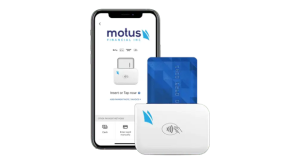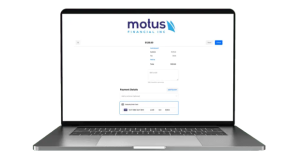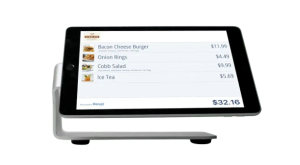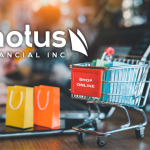How to Choose the Best POS System for Your Ecommerce Store
The tools you choose to manage your business can make or break your success. One of the most critical components of any online retail operation is the e-commerce POS system. This system facilitates seamless transactions and serves as the backbone of your entire operation, integrating sales, inventory management, customer relationship management, and more.
With so many POS systems on the market, selecting the right one for your e-commerce store can be daunting. In this comprehensive guide, we’ll walk you through the critical considerations and essential features to look for in an e-commerce POS system, helping you make an informed choice that supports your business’s growth and efficiency.
What is an E-commerce POS System?
An e-commerce POS (Point of Sale) system is a software solution that allows online retailers to manage sales, inventory, customer data, and other critical aspects of their business in one centralized platform. Unlike traditional POS systems, which are primarily designed for brick-and-mortar stores, an e-commerce POS system is tailored to meet the unique needs of online businesses, offering integrations with various e-commerce platforms and tools.
Key Functions of an E-commerce POS System:
- Transaction Processing: Handles all payment transactions, whether online or in-store, ensuring that payments are processed securely and efficiently.
- Inventory Management: Tracks stock levels in real-time across multiple locations, preventing stockouts and overstock situations.
- Customer Data Management: Collects and stores customer data, enabling personalized marketing and improved customer service.
- Sales Reporting: Provides insights into sales performance, helping you make data-driven decisions to grow your business.
The Importance of Choosing the Right E-commerce POS System
Choosing the right e-commerce POS system is not just about handling transactions; it’s about creating a seamless shopping experience for your customers while streamlining your backend operations. A well-chosen POS system can:
- Enhance Customer Satisfaction: By integrating online and in-store sales channels, a good e-commerce POS system ensures that your customers enjoy a consistent and convenient shopping experience, no matter how they choose to shop.
- Improve Operational Efficiency: Automating key processes like inventory management, order processing, and reporting can save time and reduce errors, allowing you to focus on growing your business.
- Provide Actionable Insights: The data collected by your e-commerce POS system can provide valuable insights into customer behavior, sales trends, and inventory performance, enabling you to make more informed business decisions.
Given the crucial role an e-commerce POS system plays in your business, it’s essential to choose one that aligns with your specific needs and goals. Let’s explore the key features you should look for.
Key Features to Look for in an Ecommerce POS System
When selecting an e-commerce POS system, there are several key features you should prioritize to ensure it meets the demands of your business. These features are essential for creating a seamless integration between your online store and backend operations.
1. Seamless Integration with Your E-commerce Platform
One of the most important features of an e-commerce POS system is its ability to integrate seamlessly with your existing e-commerce platform. Whether you’re using Shopify, WooCommerce, Magento, or any other platform, the POS system should sync automatically with your online store. This integration ensures that inventory levels, customer data, and sales reports are updated in real time, reducing the need for manual entry and minimizing the risk of errors.
Benefits of Seamless Integration:
- Real-Time Updates: Keeps your inventory and sales data accurate and up-to-date.
- Unified Customer Experience: Ensures consistency across all sales channels, enhancing customer satisfaction.
- Streamlined Operations: Reduces manual work, allowing your team to focus on more strategic tasks.
2. Inventory Management
Effective inventory management is crucial for any e-commerce business. Your POS system should offer comprehensive inventory management features, allowing you to track stock levels, manage product variants, and set up automatic reordering when inventory runs low. Advanced inventory management tools can also help you forecast demand, reduce waste, and avoid stockouts, ensuring that you always have the right products available for your customers.
Key Inventory Management Features:
- Real-Time Inventory Tracking: Monitor stock levels across all locations in real time.
- Automatic Reordering: Set up reorder points to ensure you never run out of stock.
- Product Variants Management: Manage different sizes, colors, and versions of your products efficiently.
3. Customer Relationship Management (CRM)
A robust CRM is a vital component of any e-commerce POS system. The CRM should allow you to collect and manage customer data, including purchase history, preferences, and contact information. This data can be used to personalize marketing efforts, improve customer service, and increase customer loyalty. Additionally, a CRM integrated with your POS system enables you to segment customers based on their behavior and target them with relevant promotions and offers.
CRM Benefits:
- Personalized Marketing: Tailor your marketing efforts to individual customers based on their preferences and purchase history.
- Improved Customer Retention: Engage with customers more effectively, increasing the likelihood of repeat business.
- Data-Driven Insights: Gain insights into customer behavior, helping you make informed decisions about product offerings and marketing strategies.
4. Payment Processing
Your ecommerce POS system should offer flexible and secure payment processing options. Look for a system that supports a wide range of payment methods, including credit and debit cards, mobile wallets, and online payments. It’s also important to consider the payment processor’s transaction fees, as these can impact your bottom line. Some POS systems offer integrated payment processing, which can simplify the payment process and reduce costs.
Important Considerations:
- Multiple Payment Options: Ensure the system supports various payment methods to cater to different customer preferences.
- Security: Choose a POS system that complies with PCI DSS standards and offers robust security features like encryption and tokenization.
- Low Transaction Fees: Compare transaction fees across different POS systems to find the most cost-effective option for your business.
5. Reporting and Analytics
A powerful reporting and analytics feature is essential for tracking your business’s performance and making data-driven decisions. The best ecommerce POS systems offer detailed reports on sales, inventory, customer behavior, and more. These insights can help you identify trends, optimize pricing strategies, and plan for future growth. Look for a system that offers customizable reports, allowing you to focus on the metrics that matter most to your business.
Key Reporting Features:
- Sales Reports: Track daily, weekly, and monthly sales to monitor performance and identify trends.
- Inventory Reports: Analyze stock levels and turnover rates to optimize inventory management.
- Customer Reports: Understand customer demographics and behavior to tailor your marketing strategies.
6. Scalability and Flexibility
As your business grows, your e-commerce POS system should be able to scale with you. Look for a system that offers flexible pricing plans, the ability to add more users or locations, and features that support your long-term business goals. Scalability is crucial for ensuring that your POS system remains a valuable asset as your business evolves, whether you’re opening new locations, expanding your product line, or entering new markets.
Scalability Considerations:
- Multi-Location Support: If you plan to open additional stores, ensure the POS system can manage multiple locations seamlessly.
- User Management: Look for systems that allow you to add new users and customize permissions as your team grows.
- Customizable Features: Choose a system that offers customizable features and add-ons, allowing you to tailor the system to your changing needs.
7. Security Features
Security is a top priority for any e-commerce business, especially when handling sensitive customer data and payment information. Your POS system should comply with PCI DSS (Payment Card Industry Data Security Standard) and offer robust security features like data encryption, secure payment processing, and user access controls. A secure e-commerce POS system not only protects your business from data breaches but also builds trust with your customers.
Essential Security Features:
- PCI DSS Compliance: Ensure the system meets industry standards for payment security.
- Data Encryption: Protect sensitive data with encryption, both in transit and at rest.
- User Access Controls: Limit access to critical functions within the POS system to authorized personnel only.
How to Evaluate Your Business Needs
Before you start shopping for an e-commerce POS system, it’s essential to take a step back and evaluate your specific business needs. This will help you identify the features that are most important to you and narrow down your options.
1. Size and Type of Your Business
The size and type of your e-commerce business will significantly impact the features you need in a POS system. A small business with a single online store may have different requirements than a large enterprise with multiple sales channels. For example, a small business might prioritize ease of use and affordability, while a larger company might need advanced inventory management and multi-location support.
Considerations Based on Business Size:
- Small Businesses: Focus on user-friendly systems with essential features and affordable pricing.
- Medium-Sized Businesses: Look for systems that offer scalability and more advanced features like detailed reporting and CRM.
- Large Enterprises: Prioritize systems that offer multi-location support, advanced inventory management, and robust analytics.
2. Budget Considerations
Your budget is a critical factor when selecting an e-commerce POS system. While it’s tempting to go for the most feature-rich option, it’s essential to balance your needs with your budget. Consider the total cost of ownership, including upfront costs, monthly fees, and any additional costs for add-ons or integrations. Motus Financial offers POS systems with tiered pricing plans, allowing you to start with a basic plan and upgrade as your business grows.
Budget Planning Tips:
- Total Cost of Ownership: Consider not just the initial cost, but also ongoing expenses like monthly fees and transaction fees.
- Scalable Pricing: Look for systems that offer scalable pricing plans, allowing you to upgrade as your business grows.
- Value for Money: Focus on the features that will provide the most value to your business, rather than paying for features you may not need.
3. User-Friendliness
A POS system should be easy to use for both you and your staff. A user-friendly system will reduce the learning curve, minimize errors, and increase efficiency. Look for a system with an intuitive interface, easy setup, and comprehensive training resources. Additionally, consider the ease of integrating the POS system with your existing tools and platforms.
Key User-Friendliness Features:
- Intuitive Interface: Ensure the system is easy to navigate, with clear menus and options.
- Comprehensive Training: Look for systems that offer detailed training resources, including tutorials and customer support.
- Ease of Integration: Choose a system that integrates seamlessly with your existing tools, reducing the need for additional setup and configuration.
4. Customer Support
Reliable customer support is essential when dealing with a system that plays such a critical role in your business operations. Look for a POS provider that offers 24/7 support, multiple contact methods (such as phone, email, and live chat), and a strong reputation for customer service. Good support can make a significant difference in minimizing downtime and resolving issues quickly.
Customer Support Considerations:
- 24/7 Availability: Ensure customer support is available around the clock, especially if you operate in multiple time zones.
- Multiple Contact Methods: Look for providers that offer support through various channels, including phone, email, and live chat.
- Reputation: Research customer reviews and testimonials to gauge the provider’s reputation for quality support.
Popular E-commerce POS Systems in 2024
There are several e-commerce POS systems leading the market in 2024, each offering a unique set of features tailored to different business needs. Here’s a closer look at some of the most popular options:
| POS System | Key Features | Best For |
|---|---|---|
| Shopify POS | Seamless Shopify integration, mobile POS, detailed analytics | Shopify users, small to medium businesses |
| Square for Retail | User-friendly interface, robust reporting, multi-location support | Small businesses, startups |
| Lightspeed Retail | Advanced inventory management, multi-channel sales, CRM features | Growing businesses, multi-channel retailers |
| Clover | Customizable hardware, integrated payments, app marketplace | Brick-and-mortar stores with online presence |
| Vend | User-friendly, strong inventory management, cloud-based | Small to medium-sized businesses |
1. Shopify POS
Shopify POS is a top choice for e-commerce businesses already using the Shopify platform. It offers seamless integration, allowing you to manage your online and offline sales from one platform. Shopify POS is known for its user-friendly interface, mobile capabilities, and detailed analytics, making it ideal for small to medium-sized businesses.
2. Square for Retail
Square for Retail is a versatile POS system that caters to small businesses and startups. It’s known for its ease of use, robust reporting features, and multi-location support. Square for Retail offers a free basic plan, making it an affordable option for starting businesses.
3. Lightspeed Retail
Lightspeed Retail is an advanced POS system designed for growing businesses with multi-channel sales operations. It offers comprehensive inventory management, CRM features, and multi-location support. Lightspeed is ideal for companies that need more advanced features and scalability.
4. Clover
Clover is a flexible POS system that offers customizable hardware and a wide range of integrated payment options. It also has an app marketplace, allowing businesses to tailor the system to their specific needs. Clover is particularly well-suited for brick-and-mortar stores with an online presence.
5. Vend
Vend is a cloud-based POS system that offers strong inventory management and a user-friendly interface. It’s ideal for small to medium-sized businesses that need a reliable and straightforward POS solution. Vend’s cloud-based nature also ensures that your data is always accessible, no matter where you are.
Frequently Asked Questions (FAQs)
1. What is the best ecommerce POS system for small businesses?
Shopify POS and Square for Retail are top picks for small businesses due to their user-friendliness and strong features. Shopify is best if you already use its platform, while Square is versatile for various business types.
2. Can I use a traditional POS system for my e-commerce store?
You can, but traditional POS systems may lack e-commerce-specific tools like inventory syncing and multi-channel support. E-commerce POS systems are better suited for managing online sales.
3. How much does an e-commerce POS system cost?
Costs range from $30 to $300+ per month, depending on features and users. Consider the total cost, including hardware and payment processing fees.
4. Do I need a separate POS system for my physical and online stores?
Not necessarily. Many modern POS systems manage both physical and online stores from one platform, syncing inventory, customer data, and sales reports.
5. How do I migrate from my current POS system to a new one?
Back up your data, choose a new system with migration support, and test it before fully implementing it to ensure a smooth transition.
Conclusion
Choosing the best e-commerce POS system for your store is a critical decision that can have a significant impact on your business’s efficiency, customer satisfaction, and overall success. By focusing on the key features that matter most—such as seamless integration, inventory management, CRM, payment processing, and scalability—you can find a POS system that aligns with your business needs and supports your growth.
Remember to evaluate your specific business requirements, consider your budget, and explore the various options available on the market. With the right e-commerce POS system in place, you can streamline your operations, improve customer satisfaction, and gain valuable insights that will help you take your business to the next level.
Contact Us
At Motus Financial, we’re dedicated to helping businesses find the best e-commerce solutions tailored to their unique needs, including optimizing for Google My Business. Whether you’re just starting or looking to upgrade your current system, we’re here to assist you every step of the way. If you have any questions or need expert guidance on choosing the right POS system for your e-commerce store, don’t hesitate to reach out to us at (608) 819-8666. Let us help you build a more efficient and successful business.








 Our POS systems are designed to streamline in-store transactions. With features like inventory management, sales reporting, and customer tracking, our POS solutions help you run your business more efficiently. Our terminals are compatible with various payment methods, including chip cards, contactless payments, and mobile wallets.
Our POS systems are designed to streamline in-store transactions. With features like inventory management, sales reporting, and customer tracking, our POS solutions help you run your business more efficiently. Our terminals are compatible with various payment methods, including chip cards, contactless payments, and mobile wallets.
